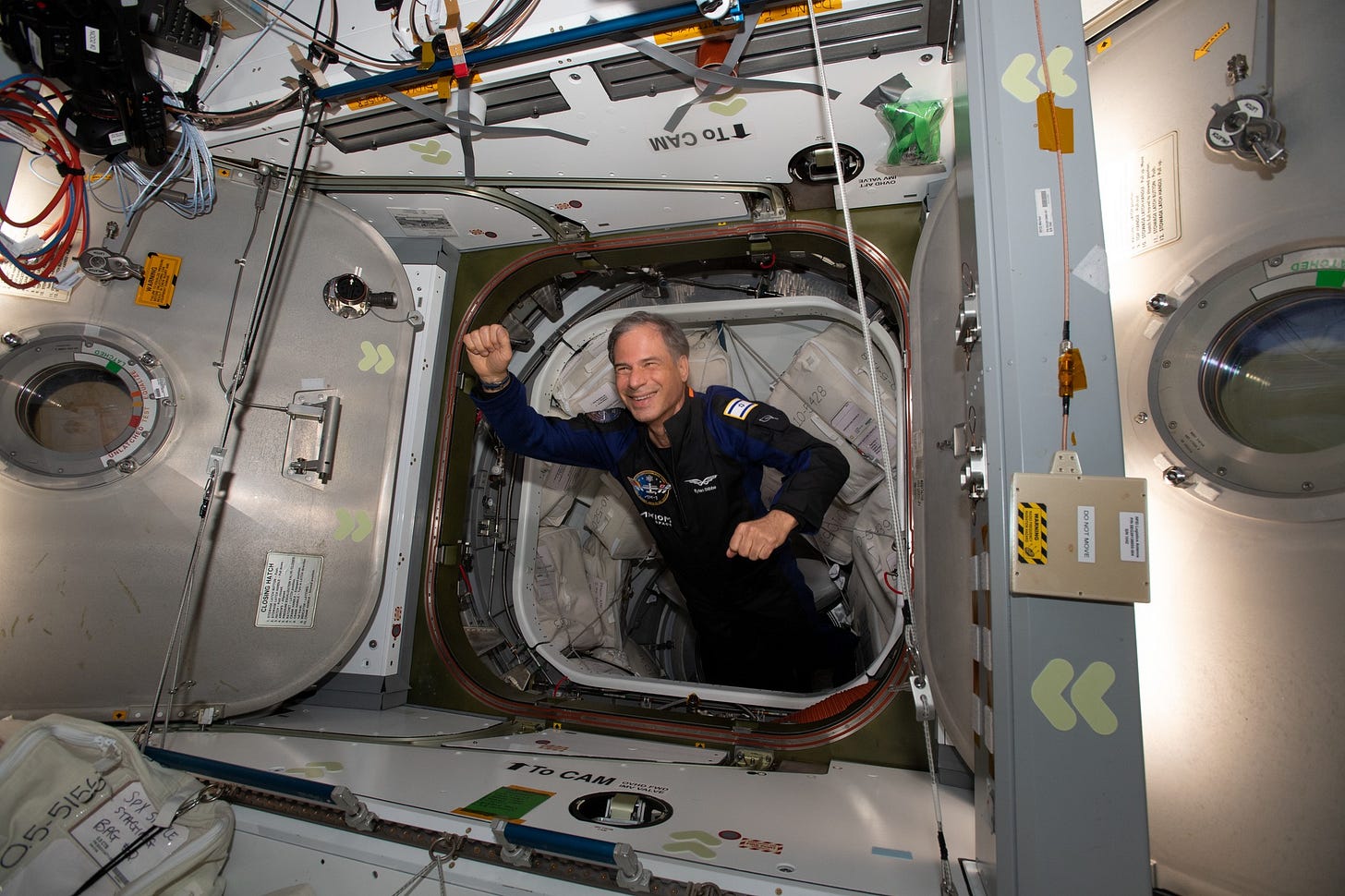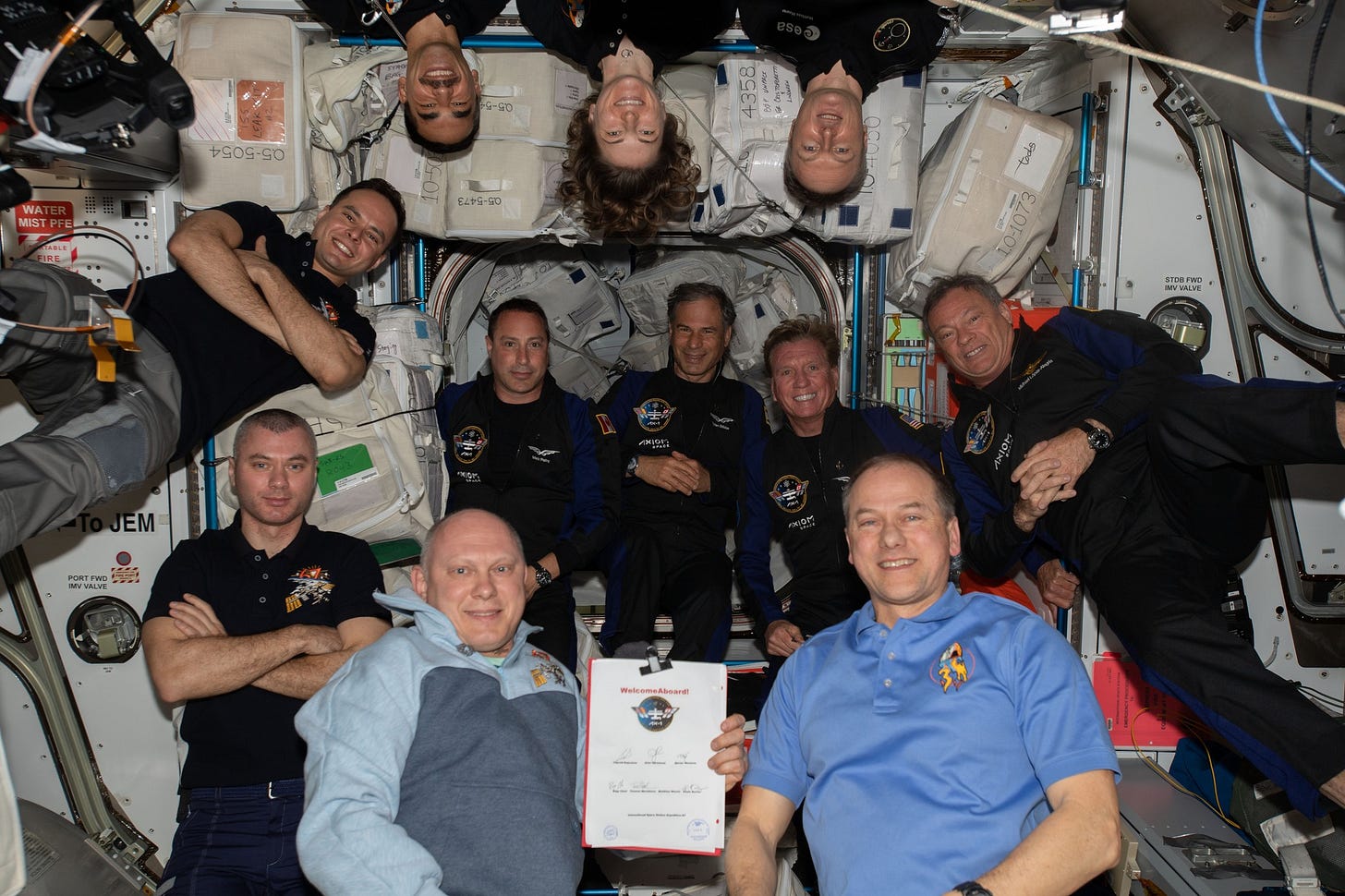
We are in a decade of Transportation Transformation. That's what Full Throttle explores. The newsletter will be delivered twice a week for free once you subscribe here. Follow me on Twitter, Instagram, and Linkedin.
If you were watching what was happening in space in April you got a glimpse of the future in Low Earth Orbit (LEO). The International Space Station (ISS) welcomed the first fully-private crew of astronauts. It was what NASA, in its acronym-loving way, calls a PAM- a Private Astronaut Mission.

Eytan Stibbe was the first of the Axiom-1 crew to enter the ISS. (Credit: Axiom)
Being the first, this PAM is historic and is a demarcation of the transition from purely government missions in LEO to the expansion of private enterprise. Former NASA astronaut Michael Lopez Alegria put it well when he referred to government efforts that led to the discovery of America and the expansion of the west.
“It is the role of governments to open new frontiers… at some point, the government should get out of the way and let commerce come in and do their thing. So we're talking about building an economy (in LEO),” Lopez Alegria said.
Former NASA astronaut and commander of Axiom-1 mission Michael Lopez Alegria talks about the historic nature of the mission. (Credit: Axiom)
Lopez Alegria made those comments after he returned from the ISS after commanding this first private mission. He is an employee of the space company Axiom that put the mission together by buying a ride from SpaceX and its Falcon-9 and Dragon capsule and paying NASA for support, food, and supplies.
Axiom is on the record that the three men it carried paid $55 million each for the Axiom-1 mission. It’s unclear how much Axiom paid NASA. The mission was negotiated before NASA announced a new fee schedule a year ago, in which it breaks out the daily costs for each private astronaut. There is an additional $10 million dollars paid to NASA for planning and access.

The full crew on the ISS with the arrival of Axiom-1. (Credit: Axiom)
This privatization is being pushed by the space industry and NASA says it is the way of the future. Astronaut Tom Marshburn, who was part of NASA’s Crew-3, and the commander on the ISS when Axiom-1 arrived, highlighted the historic moment. “It was actually really nice to be a part of history, in which this really momentous occasion, private astronauts coming up to the space station and starting to realize the dream of having a completely commercial program in low earth orbit, and this was the first step.”
NASA astronaut Dr. Tom Marshburn on the history and challenges of the first PAM visit to the ISS. (Credit: NASA)
While Marshburn called the private visit, “a positive experience,” there were issues. “It was challenging for us to get our work done as well as to assist them,” Marshburn told reporters. NASA’s safety advisory panel went a bit farther.
A panel member said last week that the arrival of the Axiom-1 crew, “seem to have a larger than expected impact on the daily workload on the professional International Space Station crew.”
Axiom’s CEO was ready when I asked him if it is on his company to change its plans and procedures to make its crew’s arrival less of a burden on the professional NASA astronauts. “Over time we will reduce what the crew (NASA crew) has to do,” said Mike Suffredini. He believes over time that the PAM crews will end up being helpful for NASA astronauts rather than a burden.
Axiom CEO Mike Suffredini responds to concerns that his Axiom-1 crew proved to be a "challenge" for the NASA crew on the ISS. (Credit: Axiom)
Axiom has big plans. It is building its own module that will become a part of the ISS. The company also wants to build its own space station. That is the future and we just saw the first part of that vision a few weeks ago in LEO.

Artist rendering of Axiom's planned private space station. (Credit: Axiom)




